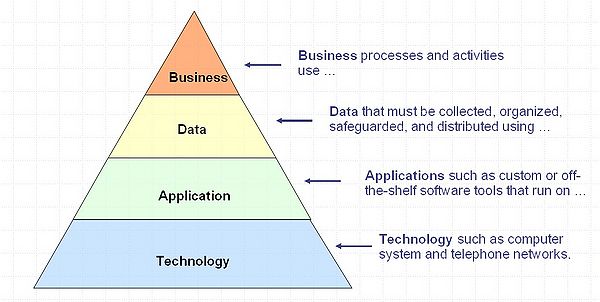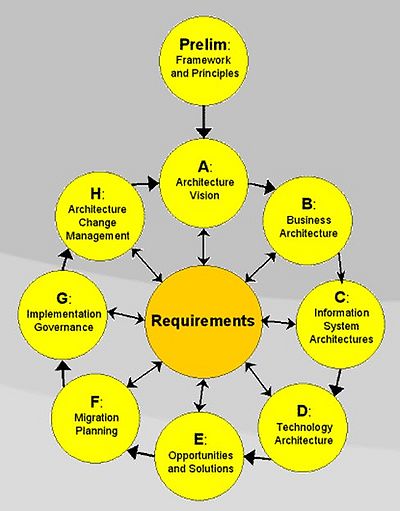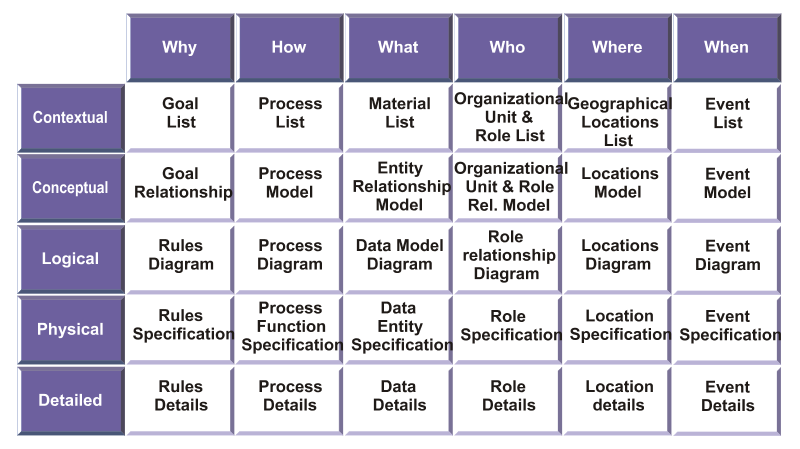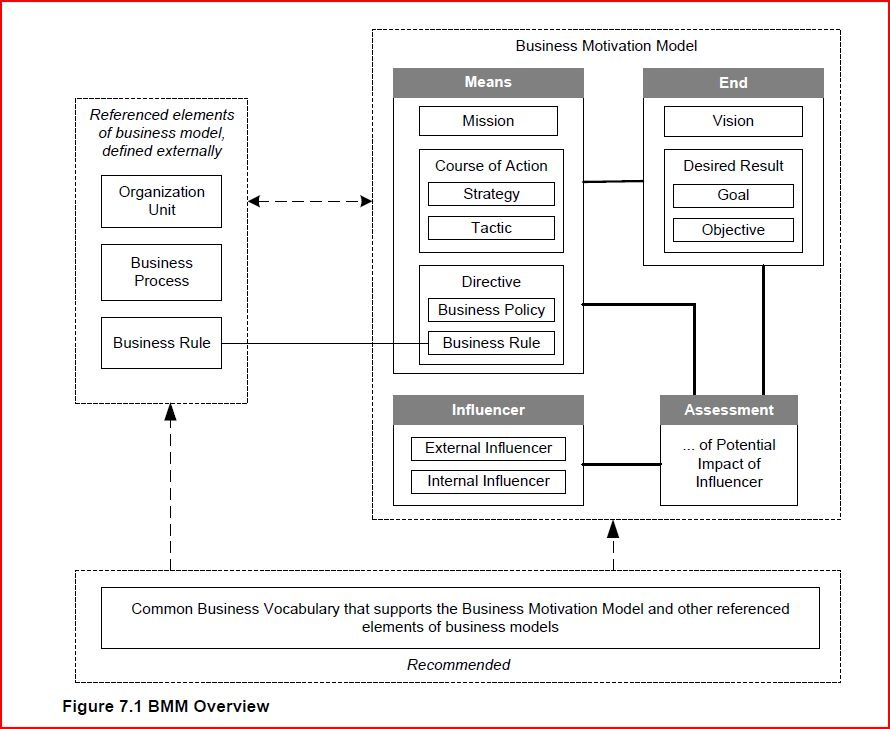Enterprise architecture framework
Introduction
An enterprise architecture (EA) framework is a "language" that allows to describe the architecture of organizations.
Wikipedia (retrieved June 22, 2010) describes “An enterprise architecture (EA) [as] a rigorous description of the structure of an enterprise, its decomposition into subsystems, the relationships between the subsystems, the relationships with the external environment, the terminology to use, and the guiding principles for the design and evolution of an enterprise.[1][2][3] This description is comprehensive, including enterprise goals, business functions, business process, roles, organisational structures, business information, software applications and computer systems. [...] Enterprise architects use various business methods, analytical techniques and conceptual tools to understand and document the structure and dynamics of an enterprise. In doing so, they produce lists, drawings, documents and models, together called "artifacts". These artifacts describe the logical organization of business functions, business capabilities, business processes, people organization, information resources, business systems, software applications, computing capabilities, information exchange and communications infrastructure within the enterprise.”
See also:
- business process modeling and process notation/execution languages like BPEL and BPMN
- workflow, change management
Examples of EA frameworks
Most EA frameworks attempt to provide a language that can describe the overall organization architecture. However, many other business modeling frameworks just focus on one aspect. As an example, we included the Business Motivation Model below, for models see for example various workflow languages, such as BPMN business process management notation language.
The Open Group Architecture Framework
According to Wikipedia, The Open Group Architecture Framework (TOGAF) is based on four pillars, called domains:
- Business architecture or business process architecture which defines the business strategy, governance, organization, and key business processes of the organization
- Applications architecture which provides a blueprint for the individual application systems to be deployed, the interactions between the application systems, and their relationships to the core business processes of the organization with the frameworks for services to be exposed as business functions for integration.
- Data architecture which describes the structure of an organization's logical and physical data assets and the associated data management resources
- Technical architecture or technology architecture which describes the hardware, software and network infrastructure needed to support the deployment of core, mission-critical applications. (retrieved 16:59, 23 June 2010 (UTC))

An interesting TOGAF topic concerns architecture development including change management:

The Zachman frameworks
“The Zachman Framework is an Enterprise Architecture framework for enterprise architecture, which provides a formal and highly structured way of viewing and defining an enterprise. It consists of a two dimensional classification matrix based on the intersection of six communication questions (What, Where, When, Why, Who and How) with six rows according to reification transformations.” (Wikipedia, retrieved 17:08, 23 June 2010 (UTC)).

Business motivation model
The Business Motivation Model (BMM) developed by Object Management Group defines the what, why and how for an organization. In more operational terms it defines the ends, the means, influences (pro/against) and assessments.

In education
Although EA architecture frameworks focus on organization that produce goods and services as apposed to knowledge and education, such "languages" that allow to describe aims, structures, functions and processes could be used for several purposes:
- To make explicit "properties" of larger institutions like universities, e.g. in a change management perspective
- To help (re-)engineering structure and processes of smaller research and teaching units.
- To plan for new programs like a distance teaching degree or to organize large research projects.
We hypothesize that the major challenge would be to use these tools for "common grounding", i.e. enhance communication between participants. In other words, in education, such frameworks could make the many implicits explicit and therefore allow for focused discussion as required by participative change management models like expansive learning. We speculate that EA architecture frameworks rather will be used to increase bureaucratic workflows as opposed to create simpler and better ones and to impose planned procedures where none are needed, i.e. dynamic planning is more appropriate. This is typically the case of EU research projects which tend to stifle innovation.
Links
- Some Wikipedia links
- Enterprise architecture
- enterprise architecture framework
- Enterprise modeling, the abstract representation, description and definition of the structure, processes, information and resources of an identifiable business, government body, or other large organization.
- Business processes
- Business process modeling, the activity of representing processes of an enterprise, so that the current process may be analyzed and improved. See also BPMN.
- Business architecture
- Process architecture
- Operating Model
- architecture domains
- TOGAF
- Open Source Enterprise Architecture Tools
- Introductions
- Niles E Hewlett (2006), The USDA Enterprise Architecture Program. PMP CEA, Enterprise Architecture Team, USDA-OCIO. January 25, 2006. PPT
- An examination of the OMG Business Motivation Model by Nick Malik, Jan 2009.